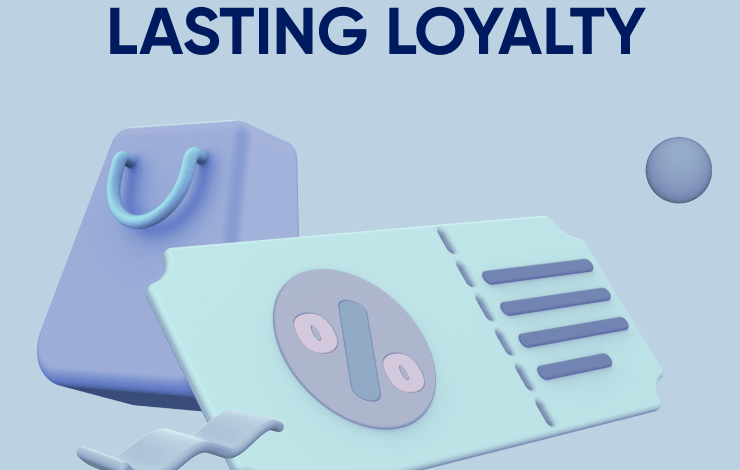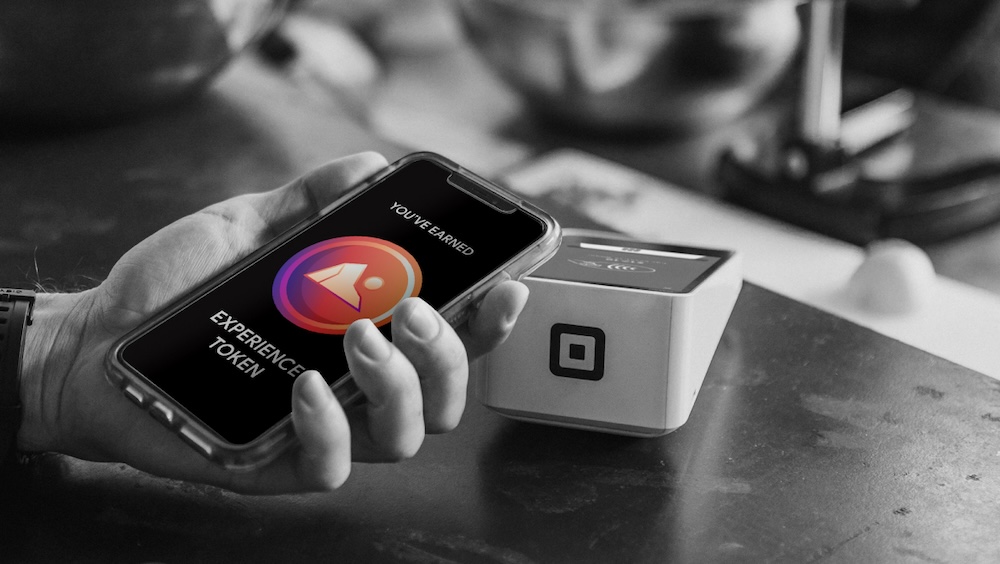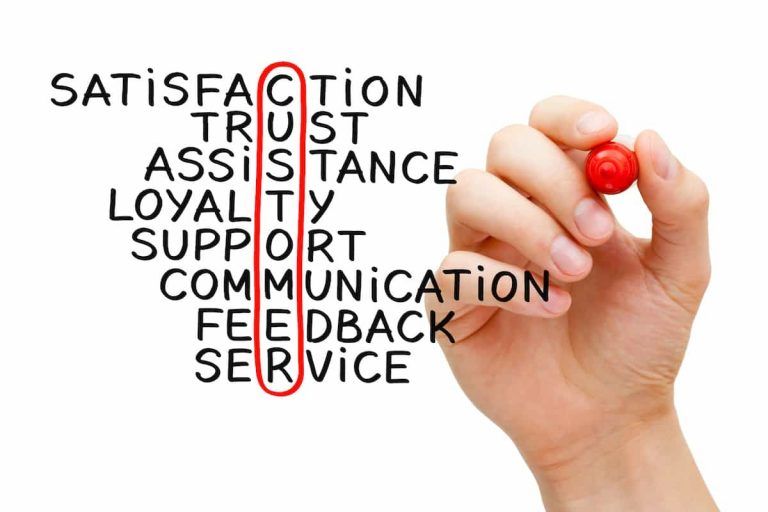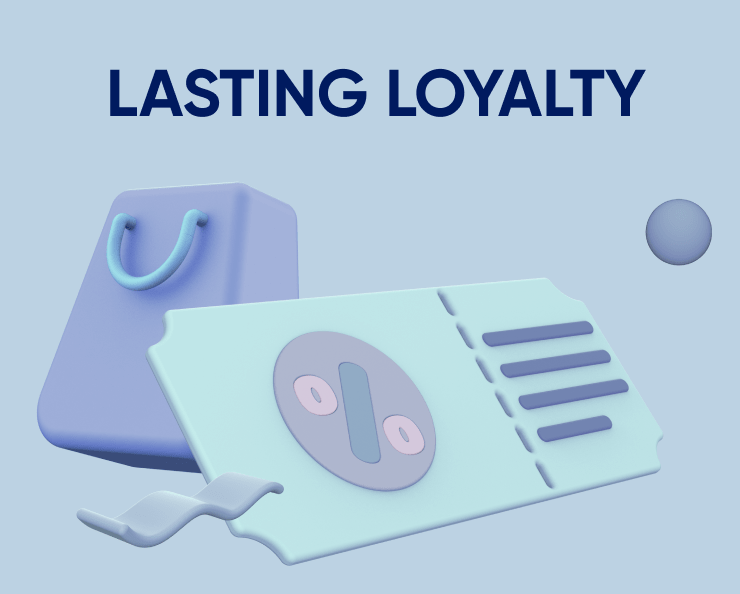
What It Means To Go Beyond The Transaction
What it means to go beyond the transaction is about shifting your focus from a single sale to building lasting relationships with your customers. It’s about understanding that the true value lies not just in the immediate profit, but in cultivating loyalty and fostering repeat business. This means actively engaging with customers after the sale, understanding their evolving needs, and providing exceptional service that keeps them coming back for more.
This isn’t just about sending a thank-you email; it’s a holistic approach to customer interaction. We’ll explore strategies for personalized communication, collecting valuable feedback, and leveraging technology to enhance the customer experience. We’ll also delve into the concept of customer lifetime value and how building strong relationships directly impacts long-term growth and profitability.
Building Relationships Beyond the Sale
The transaction itself is only the beginning of a potentially long and fruitful relationship with your customer. Focusing solely on the sale misses a crucial opportunity: building loyalty and fostering repeat business. By investing in post-transaction engagement, businesses can cultivate stronger customer relationships, leading to increased profitability and brand advocacy. This involves actively nurturing the connection beyond the point of purchase, transforming a one-time customer into a loyal advocate.
Post-transaction engagement is critical for fostering customer loyalty because it demonstrates ongoing care and value. Customers appreciate feeling valued and heard, and proactive communication after a purchase significantly strengthens this bond. This consistent interaction builds trust and encourages repeat business, ultimately leading to a higher lifetime customer value. Furthermore, loyal customers are more likely to provide positive word-of-mouth referrals, acting as brand ambassadors and driving organic growth.
Strategies for Maintaining Contact with Customers After a Purchase
Maintaining consistent contact post-purchase requires a multi-faceted approach. A well-defined strategy should encompass various communication channels and personalized messaging to resonate with each customer effectively.
Effective strategies include sending personalized thank-you emails immediately after a purchase, offering exclusive discounts or early access to new products for repeat customers, and using email marketing to share relevant content, such as product updates, blog posts, or helpful tips related to their purchase. Consider implementing a loyalty program to reward repeat purchases and engagement. Social media engagement, providing excellent customer service through various channels (e.g., live chat, phone, email), and even sending handwritten notes for particularly large or significant purchases can create a lasting impression.
Creating Personalized Follow-Up Communications
Generic follow-up emails often fall flat. Personalization is key to making customers feel valued and understood.
Leveraging customer data to tailor communications is essential. For example, referencing the specific products purchased in the email, addressing them by name, and recommending complementary items based on their purchase history creates a more relevant and engaging experience. Segmenting your customer base based on demographics, purchase behavior, or other relevant criteria allows you to send targeted messages that resonate more effectively.
Using dynamic content within email campaigns, where the email content adjusts based on the recipient’s data, is a powerful tool for personalization. For example, an email could show different product recommendations based on the customer’s previous purchases.
Collecting and Utilizing Customer Feedback
Gathering customer feedback provides invaluable insights into improving future interactions and building stronger relationships.
Implementing a system for collecting feedback is crucial. This could involve post-purchase surveys sent via email, incorporating feedback forms on your website, or utilizing social media monitoring to track customer sentiment. Analyzing this feedback can identify areas for improvement in products, services, and customer service. Addressing negative feedback promptly and professionally demonstrates a commitment to customer satisfaction and can turn a negative experience into a positive one.
Positive feedback should be acknowledged and used to reinforce what’s working well. For example, if many customers praise a particular aspect of your product, highlight this positive feedback in future marketing materials.
Understanding Customer Needs Beyond the Transaction
Building lasting relationships with customers goes far beyond simply closing a deal. It’s about understanding their needs, anticipating their future requirements, and providing value that extends well past the initial purchase. This understanding is crucial for fostering loyalty, driving repeat business, and ultimately achieving sustainable growth. This involves a shift in perspective from focusing on individual transactions to cultivating long-term customer relationships.
Customer Lifetime Value and Long-Term Relationships
Customer Lifetime Value (CLTV) is a crucial metric that quantifies the total revenue a business expects to generate from a single customer over their entire relationship. It’s not just about the first sale; it’s about the sum of all future transactions, repeat purchases, and referrals. A high CLTV indicates strong customer loyalty and a successful strategy for building long-term relationships.
For example, a coffee shop might focus on building a loyal customer base through a rewards program, encouraging repeat visits and increasing their CLTV. This approach emphasizes building relationships rather than just making individual sales. Conversely, a low CLTV suggests a need for improvements in customer retention and relationship management. Understanding CLTV helps businesses prioritize investments in customer retention strategies and optimize their marketing efforts for long-term profitability.
A simple formula to consider for CLTV is: Average Purchase Value x Average Purchase Frequency x Average Customer Lifespan. However, more sophisticated models often incorporate factors like churn rate and customer acquisition cost for a more precise calculation.
Identifying Unmet Customer Needs Through Various Channels
Identifying unmet customer needs requires a multi-faceted approach, leveraging various data sources and channels to gain a comprehensive understanding of your customer base. This includes actively seeking feedback through customer surveys, analyzing website analytics to understand browsing behavior and product preferences, and monitoring social media conversations to identify emerging trends and pain points. Direct customer interaction through phone calls, emails, and in-person conversations also provides valuable insights into individual needs and concerns.
Analyzing customer service interactions can highlight recurring issues or areas where improvements can be made. By actively listening to your customers and meticulously analyzing the data gathered from these different channels, you can uncover opportunities to develop new products, improve existing services, and ultimately create a more satisfying customer experience.
Different Customer Relationship Management (CRM) Approaches
Different CRM approaches cater to various business needs and scales. Operational CRMs focus on automating sales and marketing processes, improving efficiency, and streamlining workflows. Analytical CRMs leverage data analysis to provide insights into customer behavior, enabling businesses to personalize their interactions and optimize their strategies. Collaborative CRMs facilitate communication and collaboration within the organization, ensuring consistent and effective customer service.
Choosing the right CRM approach depends on the specific needs of the business, including its size, industry, and overall goals. A small business might benefit from a simple operational CRM, while a larger enterprise may require a more comprehensive solution integrating analytical and collaborative capabilities. The key is to select a system that aligns with the business’s objectives and provides the tools needed to effectively manage customer relationships and leverage data-driven insights.
Case Study: Understanding Customer Needs Leads to Sustained Growth
Let’s consider a hypothetical case study of a clothing retailer. Initially, the retailer focused solely on transactions, prioritizing sales volume over customer relationships. However, by implementing a CRM system and actively collecting customer feedback, they discovered a significant unmet need: personalized styling advice. Many customers expressed frustration with the difficulty of finding clothes that suited their body type and style preferences.
In response, the retailer launched a personalized styling service, offering virtual consultations with stylists and curated recommendations based on individual customer profiles. This resulted in increased customer satisfaction, higher average order values, and improved customer retention rates. The retailer also saw a significant increase in customer lifetime value, as customers became more engaged and loyal due to the personalized service.
This demonstrates how understanding and addressing unmet customer needs can lead to sustained growth and a competitive advantage.
Creating Value-Added Services
Going beyond the transaction means actively seeking ways to enhance the customer experience beyond the initial sale. Creating value-added services is a powerful strategy to achieve this, fostering loyalty and driving long-term growth. By offering supplementary services that complement your core product or service, you demonstrate a commitment to customer success and build stronger, more profitable relationships.Offering value-added services isn’t just about boosting sales; it’s about building trust and solidifying your position as a valued partner.
It allows you to differentiate yourself from competitors, increase customer lifetime value, and ultimately, improve your bottom line. However, implementing these services requires careful planning and execution to ensure they truly add value and don’t become a burden on your resources.
Types of Value-Added Services and Their Impact
The selection of value-added services should be tailored to your specific customer base and industry. A successful strategy involves understanding your customers’ needs and pain points and offering solutions that directly address them. Consider offering services that simplify processes, improve efficiency, or provide access to exclusive resources.
| Service Type | Description | Customer Benefit | Implementation Cost |
|---|---|---|---|
| Extended Warranty | An additional warranty period beyond the standard warranty, offering protection against defects or malfunctions. | Peace of mind, reduced risk of unexpected repair costs. | Moderate – depends on the length of coverage and product complexity. |
| Priority Customer Support | Dedicated support channels with faster response times and higher levels of expertise. | Faster resolution of issues, reduced downtime, improved overall experience. | Low to Moderate – may involve additional staffing or specialized software. |
| Exclusive Content or Training | Access to webinars, tutorials, guides, or other resources related to the product or service. | Improved product knowledge, increased efficiency, enhanced user experience. | Low to Moderate – depends on the complexity and scope of the content. |
| Personalized Consulting | Tailored advice and guidance from experts to help customers optimize their use of the product or service. | Improved product utilization, increased ROI, enhanced customer satisfaction. | High – requires specialized expertise and dedicated personnel. |
Integrating Value-Added Services into the Customer Journey
Seamless integration is key to the success of any value-added service. Customers should be made aware of these services at appropriate touchpoints throughout their journey, from initial purchase to ongoing usage. This might involve strategically placed information on your website, email marketing campaigns highlighting relevant services, or proactive outreach from your customer support team. For example, a company selling software could offer onboarding sessions immediately after purchase, while a retailer could provide personalized style consultations to enhance the shopping experience.
The goal is to make these services feel like a natural extension of the core offering, not an afterthought.
Long-Term Partnerships and Collaboration

Moving beyond the transactional exchange requires a fundamental shift in mindset: embracing long-term partnerships. This isn’t just about repeat business; it’s about building mutually beneficial relationships where customer success is intrinsically linked to your own. This approach fosters loyalty, generates positive word-of-mouth referrals, and ultimately contributes to sustainable growth.Successful long-term partnerships are built on a foundation of trust and transparency, coupled with a willingness to collaborate on shared goals.
This section will explore strategies for fostering these crucial elements and examine the ethical considerations inherent in cultivating lasting customer relationships.
Examples of Successful Long-Term Partnerships
Many businesses demonstrate the power of long-term partnerships. Consider companies like Apple and their long-standing relationships with developers. Apple’s App Store ecosystem thrives on collaboration, providing developers with tools and resources while benefiting from the vast array of applications available to Apple users. This symbiotic relationship fosters innovation and continuous improvement for both parties. Similarly, companies like Salesforce build strong relationships with their customers through ongoing support, training, and community engagement, fostering loyalty and repeat business through consistent value delivery.
These relationships are built on trust and transparency, evident in clear communication, responsive customer service, and a commitment to addressing customer needs effectively.
Building Trust and Transparency in Customer Relationships
Trust and transparency are cornerstones of enduring customer relationships. Transparency involves open communication, clearly defined expectations, and honest feedback. This might involve proactively sharing information about product development, addressing concerns promptly, and being accountable for mistakes. Building trust requires consistent delivery on promises, demonstrating empathy and understanding towards customer needs, and actively seeking feedback to continuously improve products and services.
Regular communication, whether through newsletters, personalized emails, or dedicated customer portals, keeps customers informed and engaged, strengthening the bond between business and customer. This proactive approach fosters a sense of partnership, not just a transactional relationship.
Developing Collaborative Projects with Customers
Collaborative projects represent a powerful way to deepen customer relationships. This could involve co-creating new products or services, developing joint marketing campaigns, or engaging customers in beta testing programs. By actively involving customers in the process, businesses gain valuable insights, foster a sense of ownership, and build stronger relationships. A framework for such projects could involve clearly defined goals, shared responsibilities, open communication channels, and regular progress reviews.
This collaborative approach allows businesses to leverage customer expertise, enhancing innovation and product development while simultaneously strengthening the customer relationship.
Ethical Considerations of Long-Term Customer Relationships
Maintaining ethical standards is paramount in long-term customer relationships. This includes protecting customer data privacy, respecting customer autonomy, and avoiding manipulative or coercive practices. Businesses must prioritize customer interests and act with integrity in all interactions. Transparency in pricing and service agreements is crucial, and any potential conflicts of interest must be clearly disclosed. A commitment to ethical conduct fosters trust and builds long-term loyalty, safeguarding the reputation of the business and ensuring the sustainability of the customer relationships.
Ignoring these ethical considerations can severely damage reputation and erode customer trust, leading to long-term negative consequences.
The Role of Technology in Extending Relationships
In today’s digital age, technology isn’t just a tool for conducting transactions; it’s the cornerstone of building and nurturing lasting customer relationships. Businesses that leverage technology effectively can move beyond the simple exchange of goods or services and cultivate genuine connections that foster loyalty and repeat business. This involves using technology to enhance communication, personalize interactions, and provide superior customer service.Technology facilitates ongoing communication and support in numerous ways, extending the interaction far beyond the point of sale.
This allows for more personalized and proactive engagement, leading to stronger customer relationships.
Facilitating Ongoing Communication and Support
Effective communication is crucial for building strong customer relationships. Email marketing, SMS messaging, and push notifications through mobile apps allow businesses to stay in touch with customers regularly, providing updates, offering support, and sharing valuable content. For example, a clothing retailer might send personalized style recommendations based on past purchases, while a software company could send tutorial videos and updates about new features.
These proactive communications demonstrate care and keep the brand top-of-mind, reinforcing the relationship beyond the initial purchase. Live chat features on websites and within apps provide immediate support and answer customer queries instantly, fostering a sense of responsiveness and enhancing customer satisfaction. These features, when combined with well-trained customer service representatives, can greatly enhance the customer experience and contribute to brand loyalty.
Personalizing Customer Interactions with Data Analytics
Data analytics plays a vital role in personalizing the customer journey. By analyzing customer data – purchase history, browsing behavior, demographics, and preferences – businesses can create targeted marketing campaigns, personalized recommendations, and customized offers. For instance, an e-commerce store might use data to segment its customer base and send tailored email promotions featuring products that align with individual customer interests.
This level of personalization shows customers that the business understands and values them, leading to increased engagement and stronger relationships. Furthermore, predictive analytics can anticipate customer needs and proactively address potential issues, strengthening the relationship even further. For example, a subscription service might anticipate a customer’s need for a renewal and offer a special incentive to encourage them to continue their subscription.
Enhancing Customer Service with AI-Powered Tools
AI-powered tools are revolutionizing customer service, offering faster response times, 24/7 availability, and personalized support. Chatbots can handle routine inquiries, freeing up human agents to focus on more complex issues. AI-driven sentiment analysis can detect customer frustration in real-time, allowing businesses to intervene and resolve problems quickly. AI-powered recommendation engines can suggest relevant products or services based on individual customer needs, creating a more personalized and engaging experience.
For example, a bank might use an AI-powered chatbot to answer common questions about account balances and transactions, while a travel agency might use AI to recommend personalized travel itineraries based on customer preferences and past travel history. This improves efficiency and allows for a more personalized and helpful experience for customers.
Technologies for Extending Customer Relationships
Several technologies can help businesses move beyond the transaction and cultivate long-term customer relationships.A well-structured paragraph explaining the importance of the following list is needed here. The list below details specific technologies that can significantly contribute to building stronger customer relationships, moving beyond the simple transactional aspects of business. Choosing the right technology will depend on individual business needs and resources, but the potential for enhanced customer engagement and loyalty is undeniable.
- Customer Relationship Management (CRM) systems: These systems centralize customer data, enabling personalized communication and targeted marketing.
- Marketing automation platforms: These platforms automate marketing tasks, allowing for efficient and personalized communication with customers.
- Live chat software: Provides immediate customer support and enhances customer satisfaction.
- Email marketing platforms: Enables targeted email campaigns and personalized communications.
- Mobile apps: Offer convenient access to information, support, and personalized offers.
- Social media management tools: Facilitate engagement with customers on social media platforms.
- Data analytics platforms: Provide insights into customer behavior and preferences, enabling personalized interactions.
- AI-powered chatbots: Offer 24/7 customer support and handle routine inquiries.
Measuring the Success of Post-Transaction Engagement

Building strong relationships beyond the sale isn’t just about good intentions; it’s about demonstrable results. Measuring the success of your post-transaction engagement is crucial for understanding what works, what doesn’t, and how to refine your strategies for even greater customer loyalty and profitability. This involves tracking specific metrics, analyzing customer feedback, and presenting your findings in a clear, compelling way.
Key Performance Indicators (KPIs) for Post-Transaction Activities, What it means to go beyond the transaction
Effective measurement starts with identifying the right KPIs. These metrics should directly reflect your post-transaction goals, whether it’s increasing customer lifetime value, improving customer satisfaction, or boosting referral rates. Focusing on a few key indicators allows for more in-depth analysis and actionable insights.
- Customer Satisfaction (CSAT) Score: This measures how satisfied customers are with your post-purchase experience, typically through surveys or feedback forms. A high CSAT score indicates successful engagement.
- Net Promoter Score (NPS): NPS gauges customer loyalty and willingness to recommend your business. A higher NPS suggests strong post-transaction relationships.
- Customer Retention Rate: This metric shows the percentage of customers who continue doing business with you over a specific period. A high retention rate demonstrates the effectiveness of your post-transaction strategies.
- Repeat Purchase Rate: Tracks the percentage of customers who make repeat purchases. This directly reflects the success of building lasting relationships.
- Average Revenue Per User (ARPU): This measures the average revenue generated per customer over a given period. An increase in ARPU often indicates successful upselling or cross-selling efforts post-transaction.
Tracking Customer Retention Rates and Lifetime Value
Understanding customer retention and lifetime value (CLTV) is essential for long-term business success. Retention rates reveal the effectiveness of your post-transaction engagement in keeping customers coming back. CLTV, on the other hand, provides a more holistic view of the overall financial value of each customer relationship over their entire interaction with your business.
The formula for CLTV is often simplified as: CLTV = Average Purchase Value x Average Purchase Frequency x Average Customer Lifespan. Accurate prediction requires historical data and appropriate assumptions about customer behavior.
For example, a company selling software might track the number of customers who renew their subscriptions annually. A high renewal rate indicates strong customer satisfaction and effective post-transaction engagement. By combining this with the average revenue generated per customer per year, they can calculate CLTV and make informed decisions about investment in customer retention programs.
Analyzing Customer Feedback to Improve Future Strategies
Customer feedback is invaluable for understanding their perceptions and improving future strategies. This feedback can come from various sources: surveys, reviews, social media comments, and direct communication. Analyzing this data allows for identification of areas for improvement and opportunities for enhancing post-transaction engagement.
- Qualitative Analysis: This involves analyzing the text of customer feedback to identify recurring themes, sentiments, and pain points.
- Quantitative Analysis: This focuses on numerical data from surveys and other metrics to understand overall trends and patterns.
For instance, consistent negative feedback regarding slow response times to support requests could indicate a need for improved customer service processes. Conversely, positive feedback highlighting personalized communication could suggest further investment in tailored post-transaction engagement.
Presenting Findings in a Visually Appealing and Informative Manner
Data visualization is crucial for effectively communicating your findings. Charts, graphs, and dashboards can make complex data easily understandable for stakeholders.
Key findings should be presented concisely and visually, using charts like bar graphs to compare CSAT scores across different customer segments, or line graphs to illustrate trends in customer retention rates over time. Dashboards can provide a holistic overview of key KPIs.
For example, a bar graph comparing CSAT scores before and after implementing a new post-purchase support system would clearly demonstrate the impact of the improvement. A dashboard displaying key metrics like CSAT, NPS, and retention rate would provide a comprehensive overview of the overall health of customer relationships.
Epilogue: What It Means To Go Beyond The Transaction

Ultimately, going beyond the transaction isn’t just a business strategy; it’s a philosophy. It’s about valuing your customers as individuals, understanding their needs, and consistently exceeding their expectations. By focusing on building genuine relationships and providing exceptional value, you’ll not only increase customer loyalty and retention but also cultivate a thriving, sustainable business. The effort you invest in building these connections will pay dividends in the long run, creating a loyal customer base that champions your brand and fuels continued growth.
Clarifying Questions
What are some low-cost ways to engage with customers post-transaction?
Personalized emails, social media interactions, and a simple thank-you note can go a long way. Consider offering exclusive content or early access to new products for loyal customers.
How do I effectively collect customer feedback?
Use post-purchase surveys, in-app feedback tools, or even social media monitoring to gather valuable insights. Make it easy for customers to share their thoughts and ensure you act on the feedback you receive.
What if a customer has a negative experience?
Address complaints promptly and empathetically. Offer a sincere apology and find a solution that satisfies the customer. Turn a negative experience into an opportunity to demonstrate your commitment to excellent customer service.
